I use only the finest select white pine for all of my pine cabs. Not from the big chain home improvement centers. The corners are halfblind dovetailed which are very attractive and a very strong wood joint. Much stronger than the mass produced cabinets which are butt jointed or dadoed and then nailed or worse yet, stapled together.
The cleats are glued and screwed ensuring a long lasting rattle free cabinet. The baffles are mounted by screws on the inside of the cabinet. The baffle can be removed and a grill cloth attached to it then reinstalled. There is no need for a grill frame. Instructions for this are shown below.
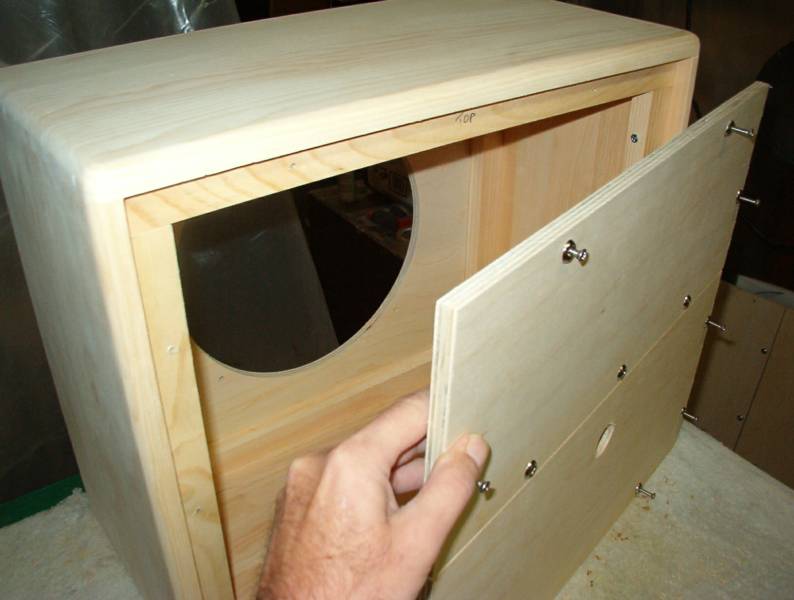
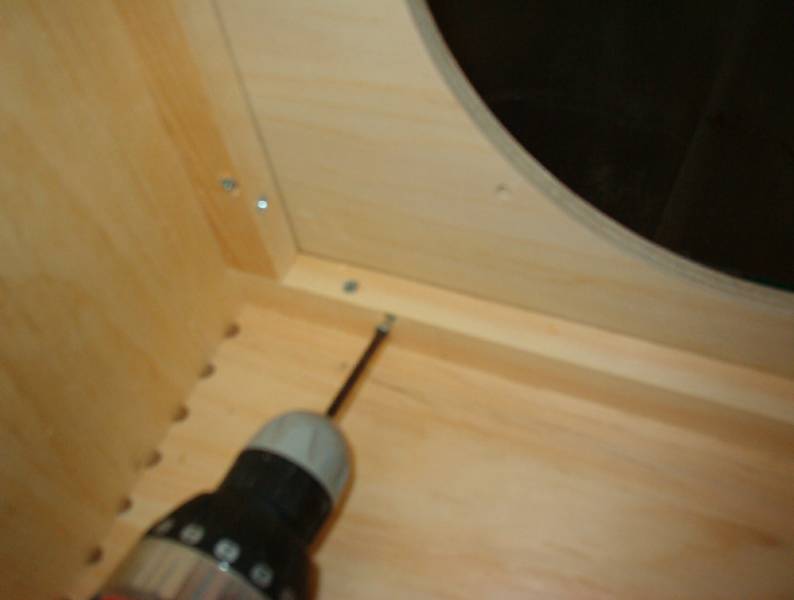
Remove the rear panel(s) to gain access to the baffle mounting screws.
From inside the cab remove the baffle mounting screws.
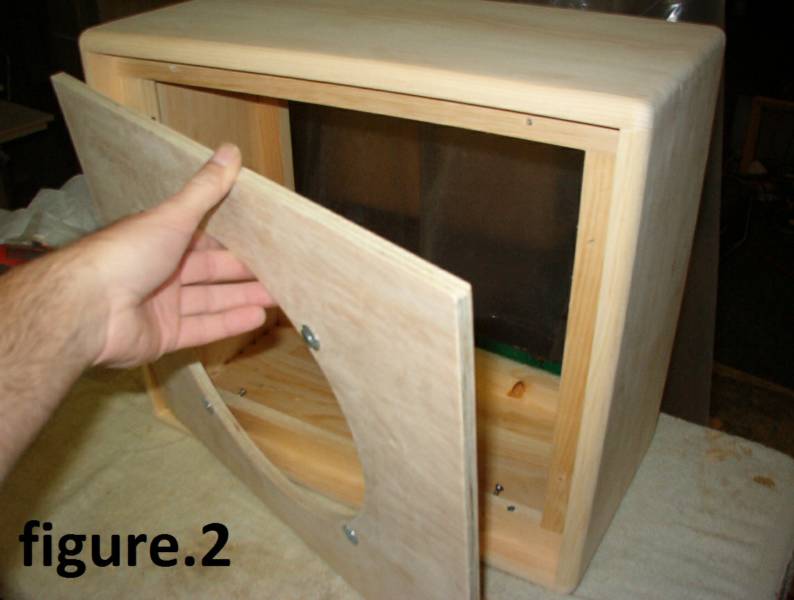
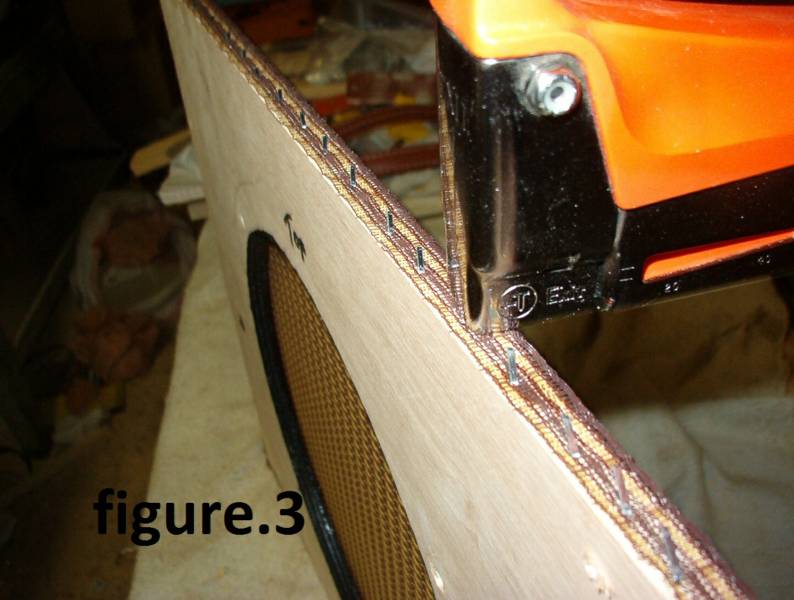
Now the baffle can be removed out through the front.
Now a grill cloth can be stapled to the edges of the baffle.
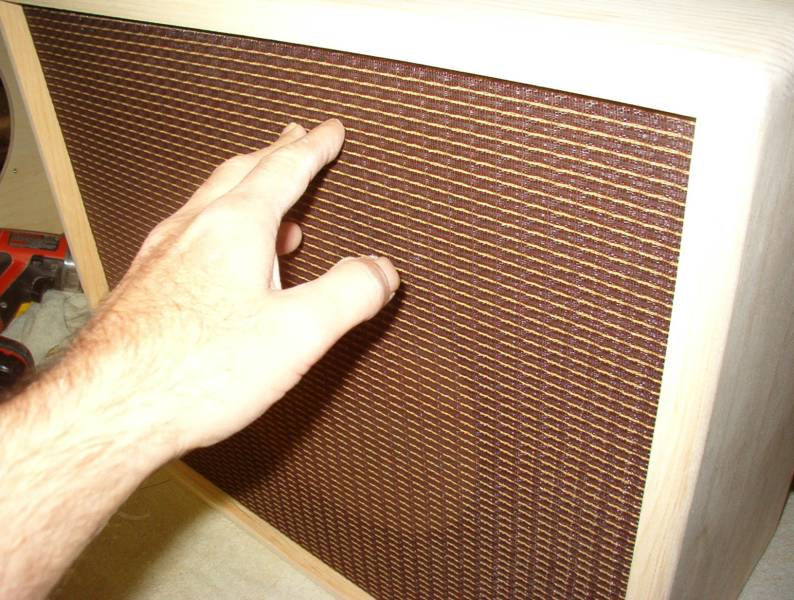
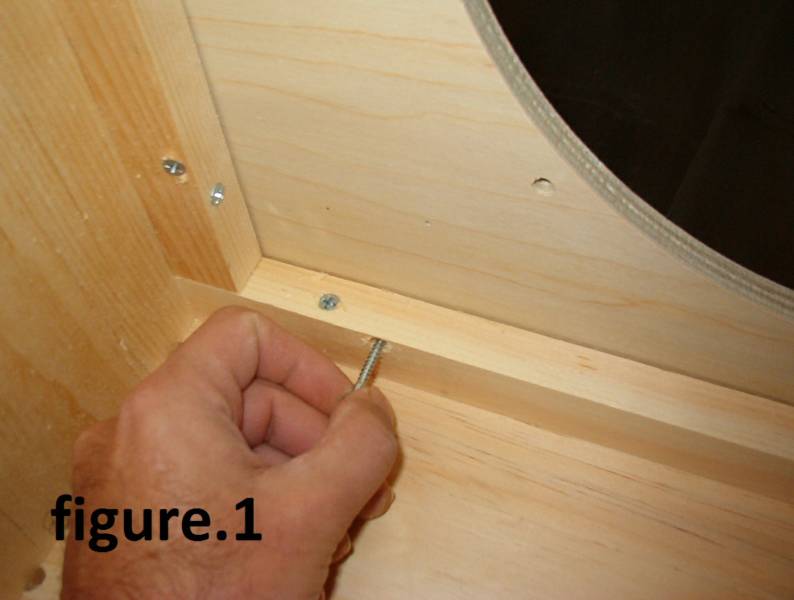
Reposition the baffle into the cabs front opening.
Reinstall with the mounting screws.
Edge glued boards vs. solid wide boards.
I've gotten a few emails from folks who were concerned about using glued up narrower boards as opposed to using a solid wide board for a speaker cabinet. Well, I could lie and tell you that a solid wide plank is the best method. That would make my job a lot easier. Building would be a lot faster.
Pine is a very rich sounding tone wood for a speaker cabinet unfortunately, it is an unstable wood and can warp, cup, and split even after the project is completed and the wider the board the more likely it can happen. In my 30 + years woodworking I have found that gluing up narrower boards (particularly for soft woods like pine) to make a wider board greatly reduces the chance of the wood moving around in climate changes. You may run across a few other seasoned woodworkers who agree.
The strength of the project is not compromised at all. In fact the glued joint is actually stronger than the wood itself. I have tested (both accidentally and purposely) many pieces throughout the years and a break has never happened on the glued edge joint. The wood on either side of the glued joint will give first.
Now, how is the tone in a solid wide board vs. a glued up board? Since the strength of the board is not compromised, I cannot for the life of me imagine that it could affect the tone in any way. In fact, in the long run a glued up board may actually sound better as they will be less likely to develop cracks and splits and corner joint problems down the road which could cause leakage and/or rattles.
Before gluing I like to stack the boards upright on their edges in the order that I intend to place them in the glue up then check to see if you can see any light showing through. If I see light showing through I run them back through the jointer again until they fit nicely together with no light showing through. Also, if they are wobbly and don't stack well that indicates a problem edge as well.
After trimming and squaring up the edges of the pine boards to be glued I recommended that you clean up the edges of the boards with some lacquer thinner before gluing. The will remove any glazed pitch on the edges (caused from the heat of the machining) and will let the glue penetrate into the wood better resulting in a much stronger glue up. Also, upon clamping you should avoid putting too much muscle into tightening the clamps as this can force too much glue out leaving the joint glue starved which obviously can compromise the strength.
Thanks,
Tim